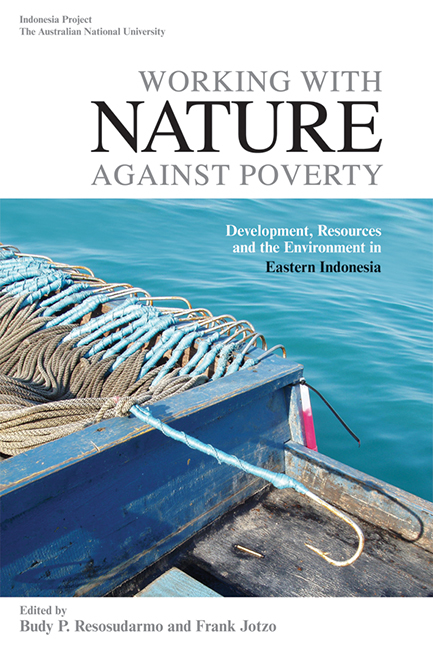Book contents
- Frontmatter
- Foreword
- Contents
- Figures and Maps
- Tables
- Contributors
- Acknowledgments
- Glossary
- Map
- 1 Development, Resources and Environment in Eastern Indonesia
- PART I ECONOMIC DEVELOPMENT AND POVERTY ALLEVIATION
- PART II NATURAL RESOURCES AND THE ENVIRONMENT
- PART III CONFLICT, LOCAL DEVELOPMENT AND HEALTH
- 12 Maluku: The Long Road to Recovery
- 13 Improving the Livelihoods of the Poor: Challenges and Lessons from East Nusa Tenggara
- 14 How Far Is Papua from Achieving the Goals of Healthy Indonesia 2010?
- Index
14 - How Far Is Papua from Achieving the Goals of Healthy Indonesia 2010?
from PART III - CONFLICT, LOCAL DEVELOPMENT AND HEALTH
Published online by Cambridge University Press: 21 October 2015
- Frontmatter
- Foreword
- Contents
- Figures and Maps
- Tables
- Contributors
- Acknowledgments
- Glossary
- Map
- 1 Development, Resources and Environment in Eastern Indonesia
- PART I ECONOMIC DEVELOPMENT AND POVERTY ALLEVIATION
- PART II NATURAL RESOURCES AND THE ENVIRONMENT
- PART III CONFLICT, LOCAL DEVELOPMENT AND HEALTH
- 12 Maluku: The Long Road to Recovery
- 13 Improving the Livelihoods of the Poor: Challenges and Lessons from East Nusa Tenggara
- 14 How Far Is Papua from Achieving the Goals of Healthy Indonesia 2010?
- Index
Summary
INTRODUCTION
The vision for health development in Indonesia was formulated by the Ministry of Health in 2000. Called ‘Healthy Indonesia 2010’, it aims to create an environment conducive for human beings to achieve their optimal health status, a community with proactive behaviour to promote health and prevent disease, and a heath care system with sufficient capacity to provide quality health services. The principles on which Healthy Indonesia 2010 are based include equitable and even development, with priority to be given to remote areas (Ministry of Health 2000).
Papua, the easternmost province of Indonesia and often regarded as the most culturally distinct, is most in need of priority. Despite the province's abundant natural resources, Papuans are poorer than other Indonesians. Papua has Indonesia's highest poverty rate, with 41.8 per cent of the population living on less than US$1 per day, more than double the national average of 18.2 per cent (BPS, Bappenas and UNDP 2004: 187).
Papua continues to face problems of poor quality and uneven provision of health services, local political instability, the emergence of new diseases and persistence of old ones, and low levels of education. Although vital indicators show that there have been some improvements, the province still lags behind the western part of Indonesia. It ranked 29th out of Indonesia's then 30 provinces on the 2004 human development index (HDI), which measures longevity, educational attainment and standard of living (BPS, Bappenas and UNDP 2004: 109). Malaria continues to be the most frequent cause of mortality and morbidity, and a serious AIDS epidemic is emerging.
This chapter discusses the current health problems facing Papua and reviews the capacity of the province to improve the health status of Papuans. Will Papua achieve the aims set out for it in Healthy Indonesia 2010?
STRUGGLING FOR HEALTH
Under the Dutch administration, health care services in Papua were managed by the Public Health Service (Dienst van Gezondheidszorg), a very active government department providing health care services down to the village level.
- Type
- Chapter
- Information
- Working with Nature against PovertyDevelopment, Resources and the Environment in Eastern Indonesia, pp. 321 - 342Publisher: ISEAS–Yusof Ishak InstitutePrint publication year: 2009



